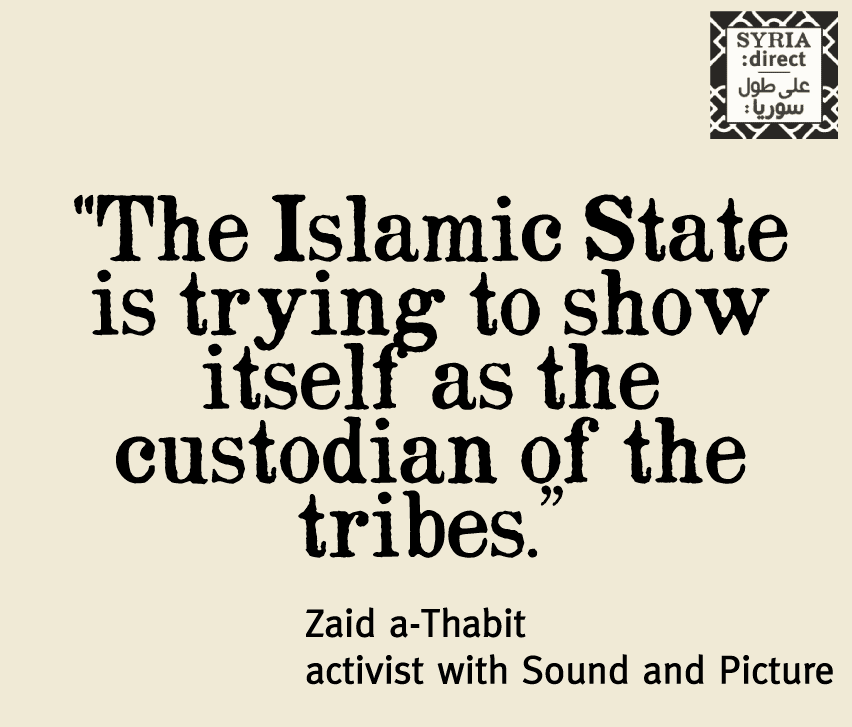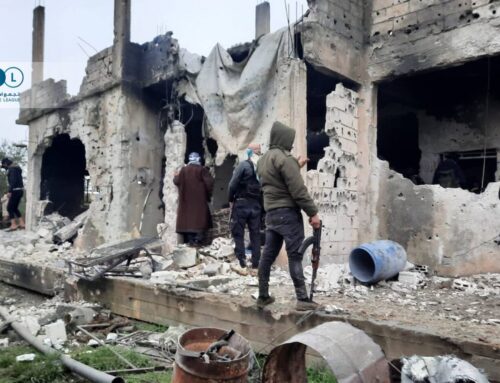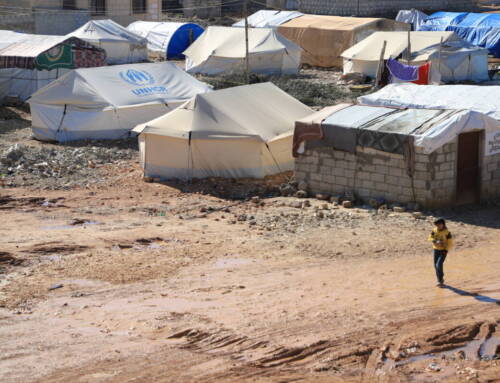In an unusual step, Islamic State mediates Deir e-Zor tribal feud
Two years ago, a series of armed confrontations between members […]
16 December 2015
Two years ago, a series of armed confrontations between members of the Hammar and Saawa tribes in eastern Deir e-Zor province over the rights to an oil field left 11 dead.
This week, the Islamic State organized the formal reconciliation meeting, bringing in a mediator from the larger clan that both tribes are members of, and paying SP25 million (approximately $113,000) to the families of tribesmen killed in that fighting.
It is unusual for an outside party to pay blood money for this type of tribal settlement, says Zaid al-Thabit,an activist with the pro-opposition media campaign Sound and Picture. Blood money, or fidya, is traditionally paid by the family of the killer.
In this case, the Islamic State, which has fighters from both the warring tribes in its ranks, had multiple interests in resolving the feud: “IS called on both parties to pledge allegiance to it after the end of the reconciliation,” al-Thabit tells Syria Direct’s Noura al-Hourani.
“IS wants the allegiance of all the tribes in Deir e-Zor, like in Iraq.”
Q: Who were the tribes involved and what was the dispute about?
The problem was between the Hammar and Saawa tribes. Both of the tribes are branches of the larger Bukara tribe.
There has been a blood feud between them for a long time, but two months before IS entered Deir e-Zor, an issue arose around an oil field called Deiro. It developed into armed conflict that resulted in 11 dead, eight from al-Sawaa and three from Hammar.
The reconciliation was attended by one of the Bukara sheikhs, as well as the IS governor of Deir e-Zor and other IS leaders. The Bukara tribe is one of the largest tribes in the region, and some of its members are fighting alongside IS.
Q: What was IS’s goal in mediating this dispute?
The Islamic State is trying to show itself as the custodian of the tribes and that it is able to solve their problems in order to bring them into its ranks. The biggest motivation for IS is to prevent armed confrontations between its fighters. There are IS fighters from both tribes, so they are afraid that this problem will spread internally within the Islamic State.
Q: Who did IS pay the SP25 million (approximately $113,000)?
IS paid the relatives of those who were killed in the fighting. It was blood money.
Of course, this way IS is killing two birds with one stone, because not only does it end the dispute but they will get the money back in other [non-monetary] ways. The proof is that IS called on both parties to pledge allegiance to it after the end of the reconciliation. IS wants the allegiance of all the tribes [in Deir e-Zor], like in Iraq.







